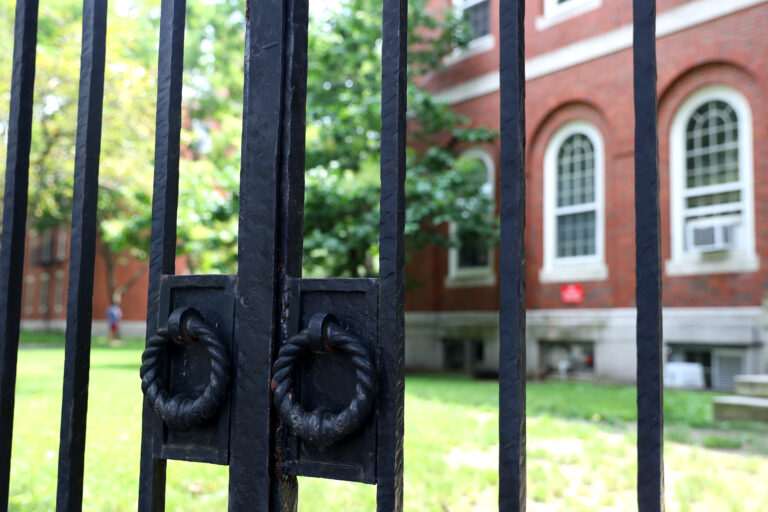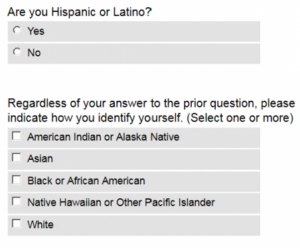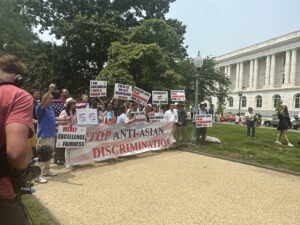What does “diversity” actually mean in college admissions?

Two hundred and four.
That’s how many times the word “diversity” came up during the recent marathon Supreme Court oral arguments over whether to end affirmative action in college admissions. With characteristic bluntness, Justice Clarence Thomas remarked about midway through that, “I’ve heard the word ‘diversity’ quite a few times, and I don’t have a clue what it means. It seems to mean everything for everyone.” But even after nearly five hours of argument, Justice Thomas never got a good answer.
We do know this: “Diversity” can’t mean race alone. Since 1978, the Supreme Court has prohibited colleges and universities from implementing racial quotas or using race as the primary factor to admit students. Even though many universities ask applicants to check a box for their race or ethnicity on their applications, that checkbox isn’t supposed to be the determining factor.
So what does “diversity” actually mean in college admissions? And why do schools care so much about maintaining “diversity” that two of them—Harvard and the University of North Carolina at Chapel Hill—have gone all the way to the Supreme Court to defend that race/ethnicity checkbox?
Based on the recent Supreme Court arguments, there are three possibilities.
Possibility #1: Universities truly believe students learn better when their school reflects society
Lawyers for Harvard, UNC, and the federal government all told the Supreme Court that students benefit when their universities are diverse, and that taking an applicant’s race into account is vital to maintaining that diversity. As the U.S. solicitor general put it: “When students of all races and backgrounds come to college and live together and learn together, they become better colleagues, better citizens, and better leaders.”
Taking Harvard and UNC at their word, then, we should see that their nationally ranked campuses reflect not just different races, but also the different backgrounds of the nation they draw from. Given their fierce defense of “diversity” in college admissions, Harvard and UNC ought to be diverse in all the ways that Americans are diverse.
They are not.
Take Harvard, for example. Only 9 percent of incoming freshman at Harvard identify as conservative, and 82 percent are wealthy—23 times more wealthy students than low-income students. Approximately 30% of each incoming class is made up of athletes, legacies, the children of high-dollar donors, or children of faculty and staff. An applicant’s religion—often a fundamental aspect of a person’s identity—is hidden from admissions officers, and Harvard is overwhelmingly Christian or atheist/agnostic anyway: Combined, Jews, Muslims, Mormons, and Hindus made up only about 15 percent of each class.
UNC also does not ask applicants about their religious affiliation, although its attorney still insisted that UNC considers religion as part of its holistic admissions process. Socioeconomic diversity is also lacking at UNC, where the average student comes from a family earning $100,000 more than the average North Carolina family.
But Harvard and UNC haven’t spent millions of dollars in legal fees to ensure they can admit students from a variety of socioeconomic, geographic, religious, or political backgrounds, despite the massive imbalances between their student bodies and the rest of the country.
No. They’ve spent millions of dollars defending these checkboxes:

And what does that checkbox get Harvard and UNC, that a race-neutral application process would not? At UNC, it’s a 1.2 percent boost in black admittees, or about 700 students each year who are admitted (or rejected) based on their skin color. At Harvard, race is the determining factor for a whopping 45 percent of black and Hispanic admittees.
Clearly, diversity of viewpoint, religious affiliation, socioeconomic status, or the myriad other experiences that make individuals unique are not part of the “diversity” universities are interested in.
Possibility #2: Universities believe race/ethnicity is a proxy for overcoming adversity
Another possibility is that universities like Harvard and UNC value applicants who have overcome adversity and use the race/ethnicity checkbox as a proxy for this “overcoming adversity” factor.
Justices Ketanji Jackson and Sonia Sotomayor would seem to agree—during oral argument, both equated race or ethnicity to an applicant’s experience overcoming hardships, and questioned if ending race-based admission would prevent universities from considering the life experiences of black and Hispanic applicants.
But being black doesn’t automatically mean that an applicant has overcome great hardships in their life, just as being white doesn’t automatically mean an applicant has sailed through life with ease.
If universities truly want to admit applicants who have overcome adversity, they wouldn’t need a race/ethnicity checkbox. Applicants could simply write about a time they’ve overcome adversity. For some, that story will be inextricably tied with their race, and that’s OK—because what makes those applicants unique and diverse is how they handled their challenges, not the color of their skin.
And yet, the universities defend the checkbox because it gives them, as UNC’s lawyer argued, “important information about where that person is coming from and what their experiences have been,” and “it can matter what an applicant’s racial background is.” With the checkboxes, a refugee from a Ukrainian war zone is reduced to “white” on her Harvard application. Or in other words, it is race, not overcoming adversity, that counts.
Possibility #3: Universities just want to racially balance their student populations
That leaves us with the likelihood that when universities like Harvard and UNC say they want “diversity,” what they really mean is “visual diversity”—looking diverse in pictures, on campus, and on demographic reports.
Achieving visual diversity means classifying applicants by their race, and skin color becomes the most important factor in an applicant’s admission. How else can you explain why, as an expert testified in the Harvard case, an Asian American male with a 25% chance of admission would have a 95% chance of admission if he could just check the “African-American” box on his application instead? Why ask applicants about their race at all if you’re not keeping score?
As legal commentator David Lat, who coined the phrase “visual diversity,” puts it, Harvard and UNC are arguing that “[h]aving classrooms and admissions brochures that look like Benetton ads can justify resorting to racial classifications that we have justifiably banned in pretty much every other area of American life.”
The emperor has no clothes. When “diversity” means “visual diversity,” it’s a farce—a performance that demonstrates the opposite of what the institution claims. Treating people as visual stand-ins for their race doesn’t bring richness, depth, and pluralism to campus. That can come only from treating people as individuals.








